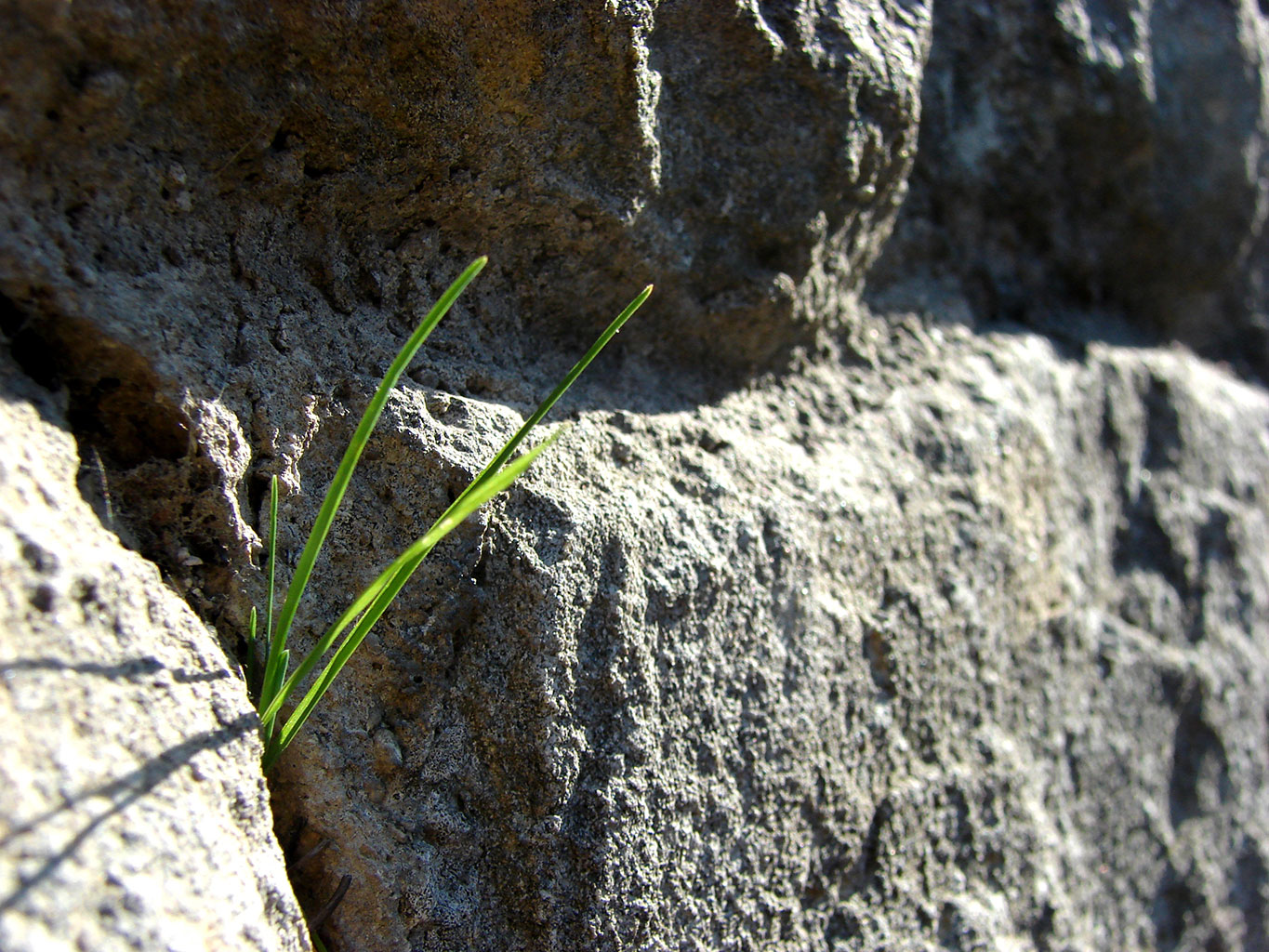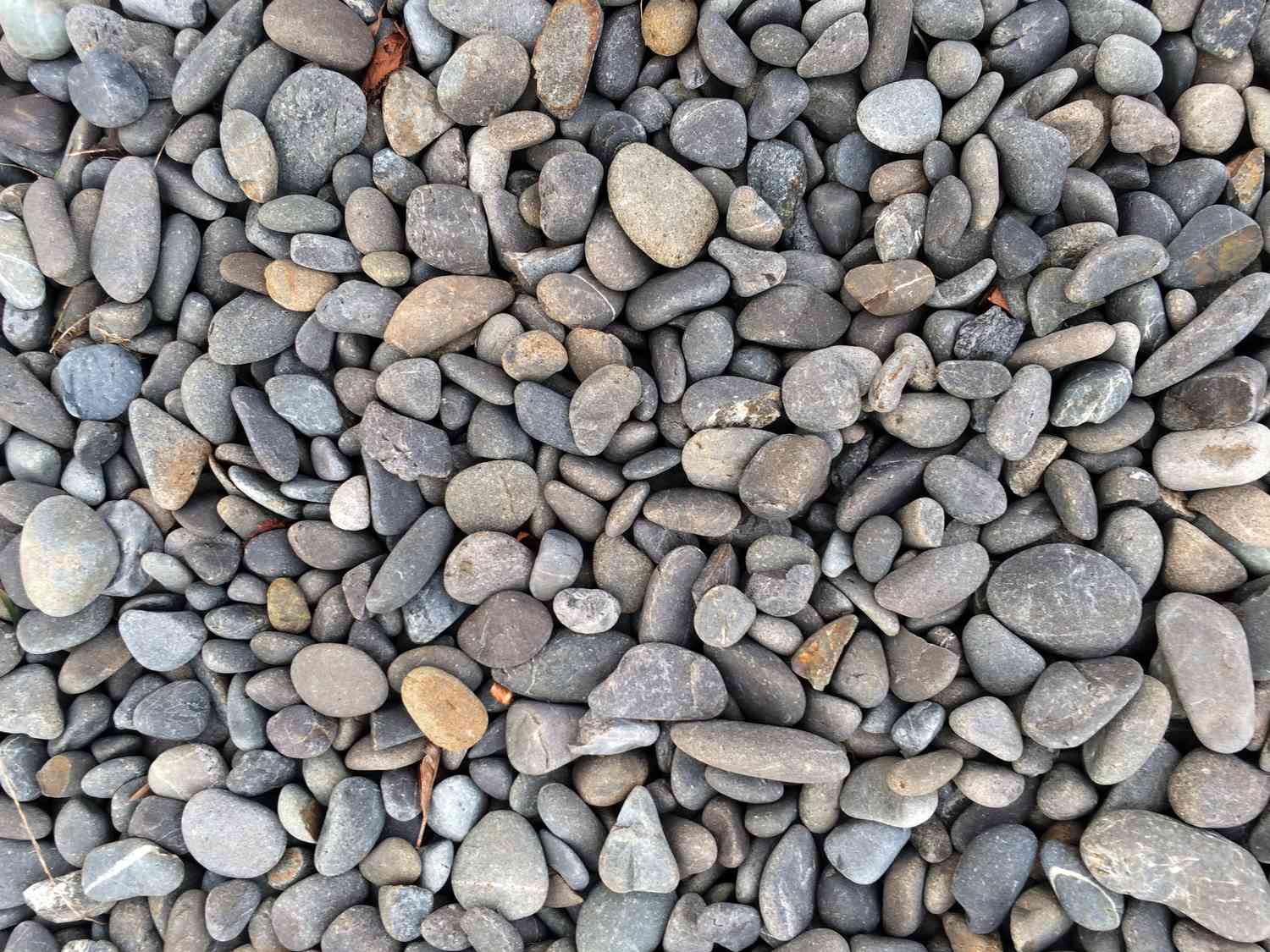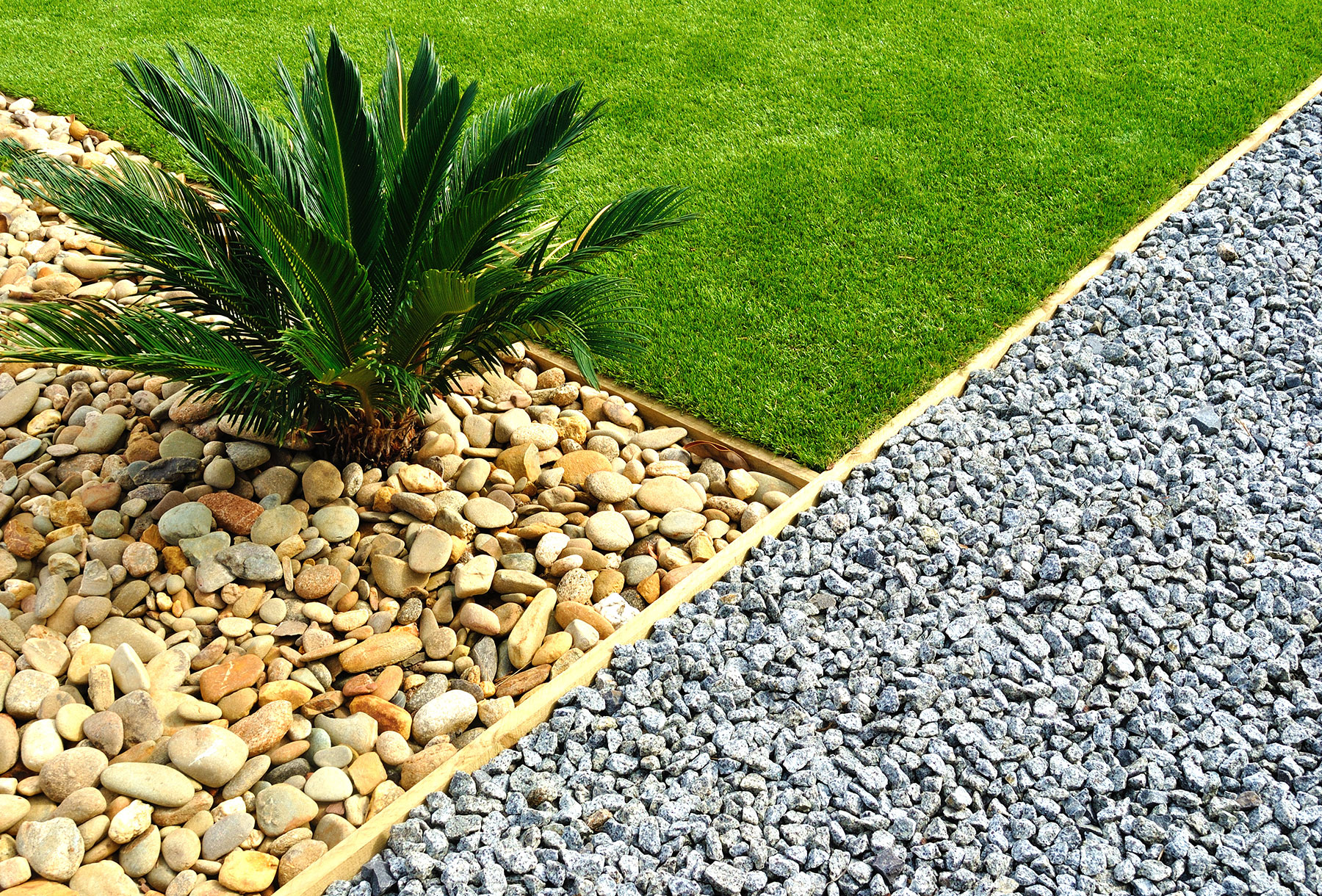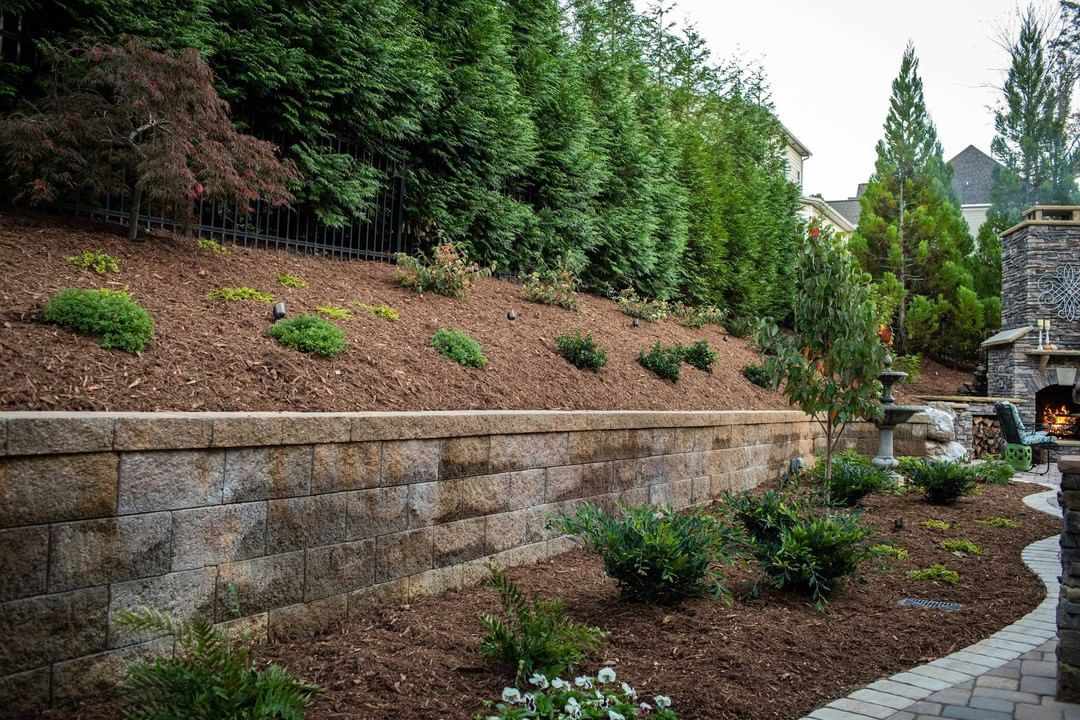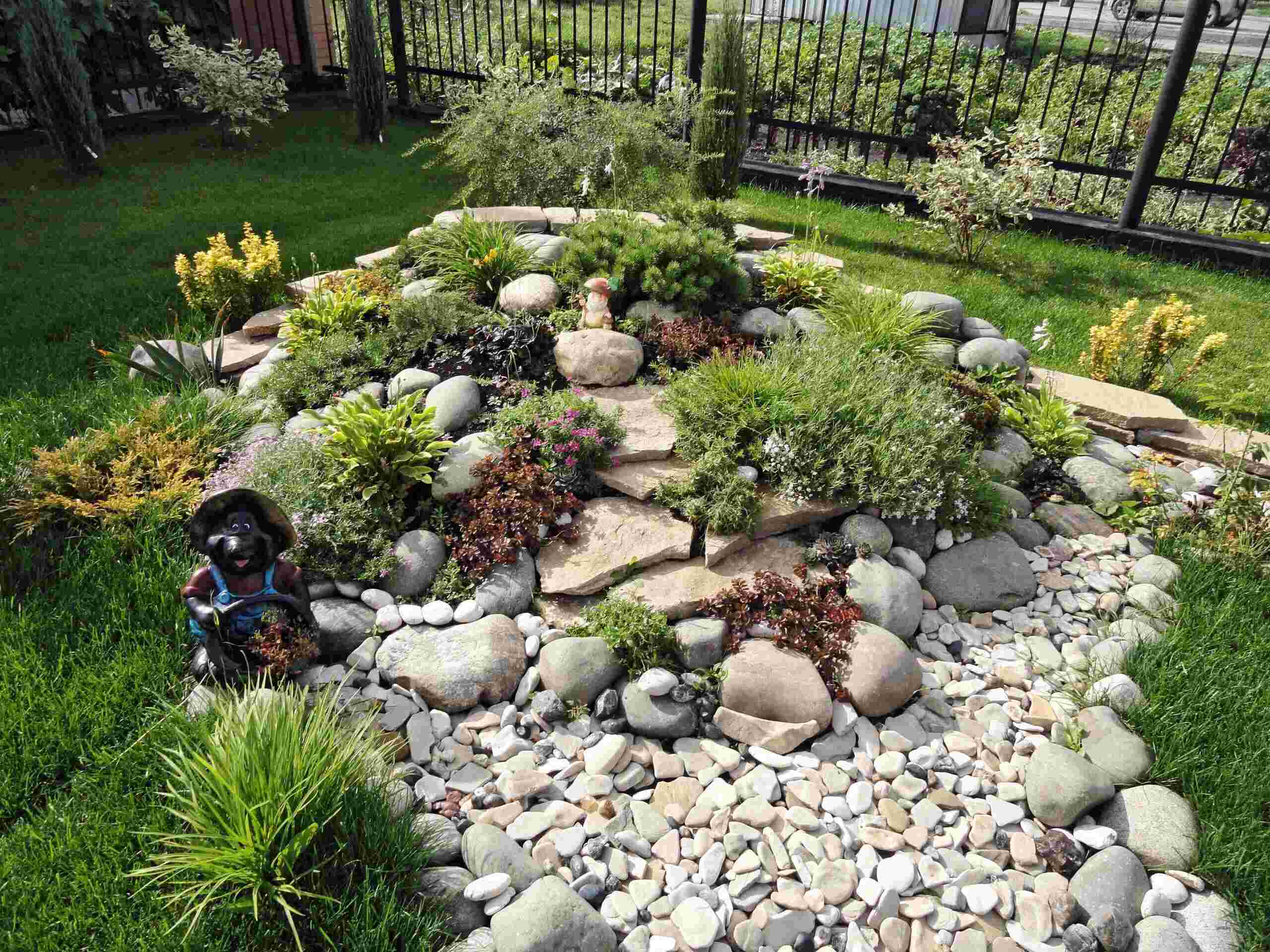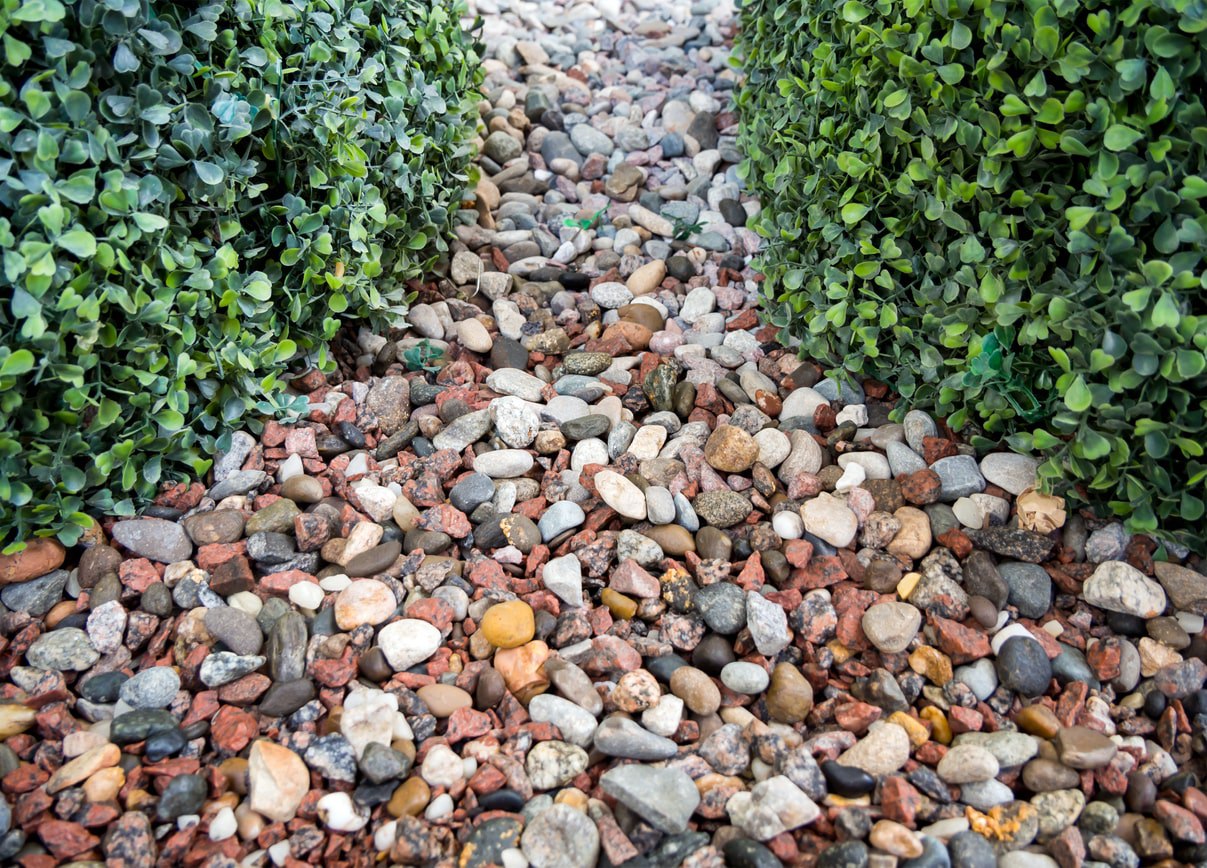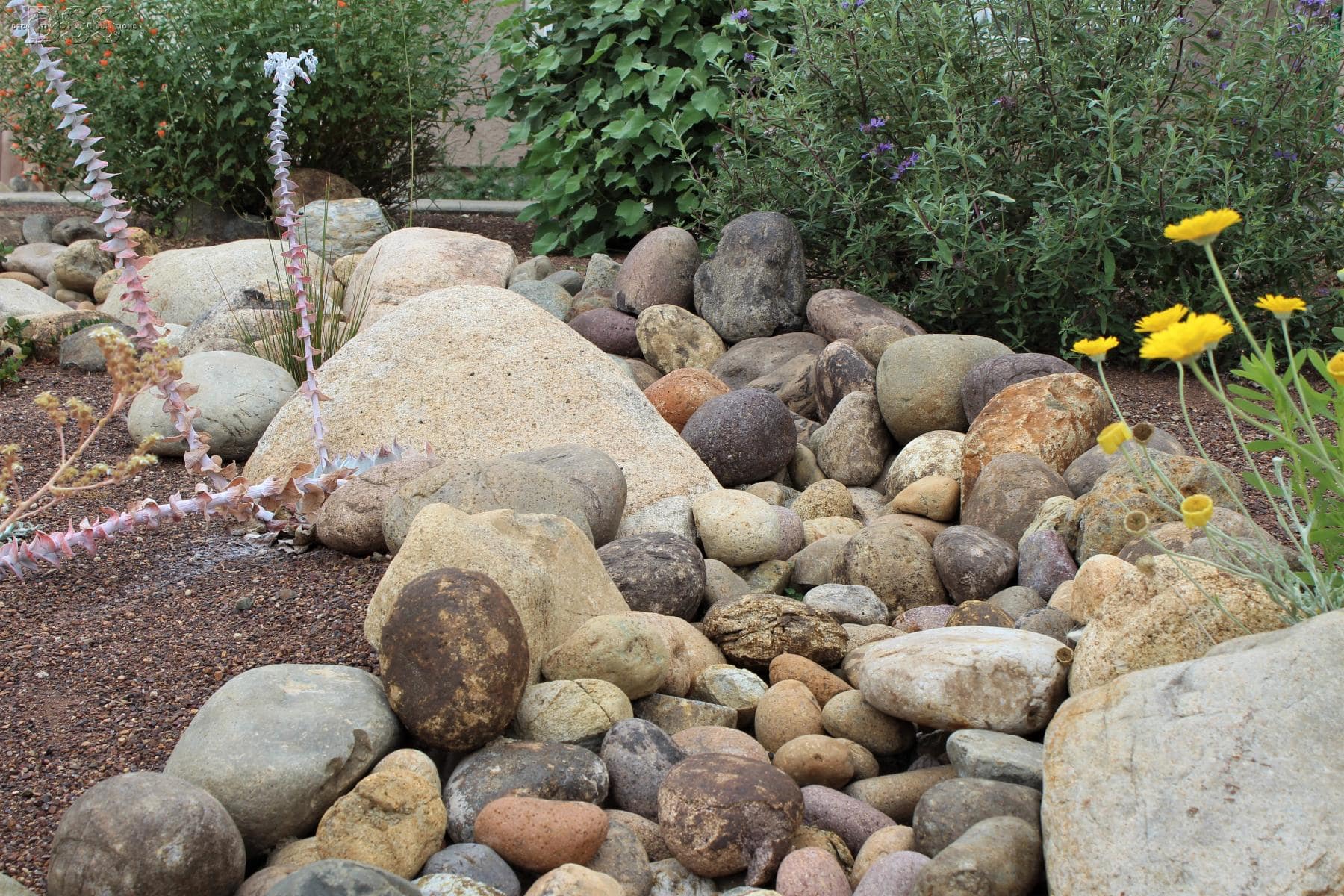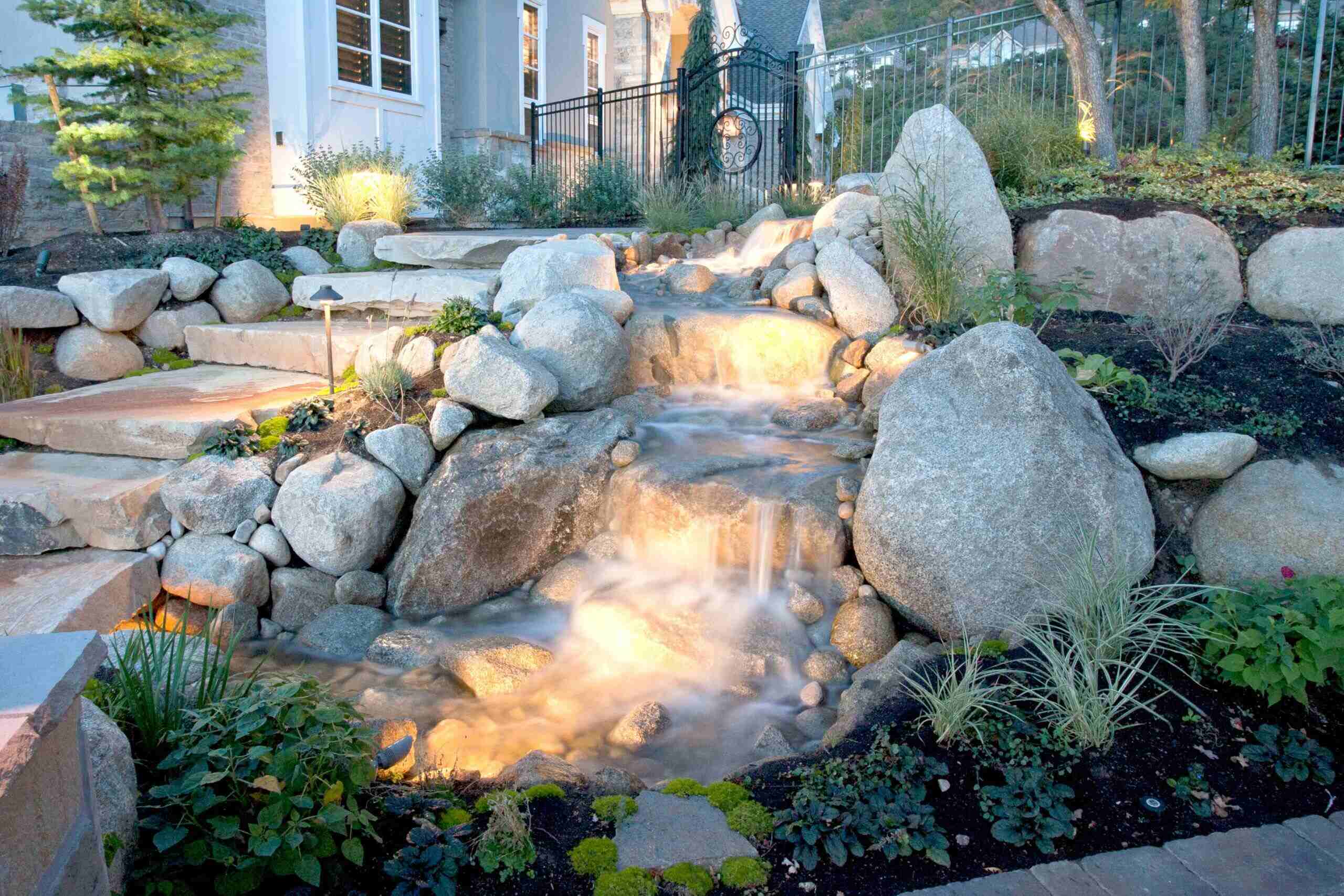Home>Garden Design>Landscape Design>How To Use Landscaping Rocks
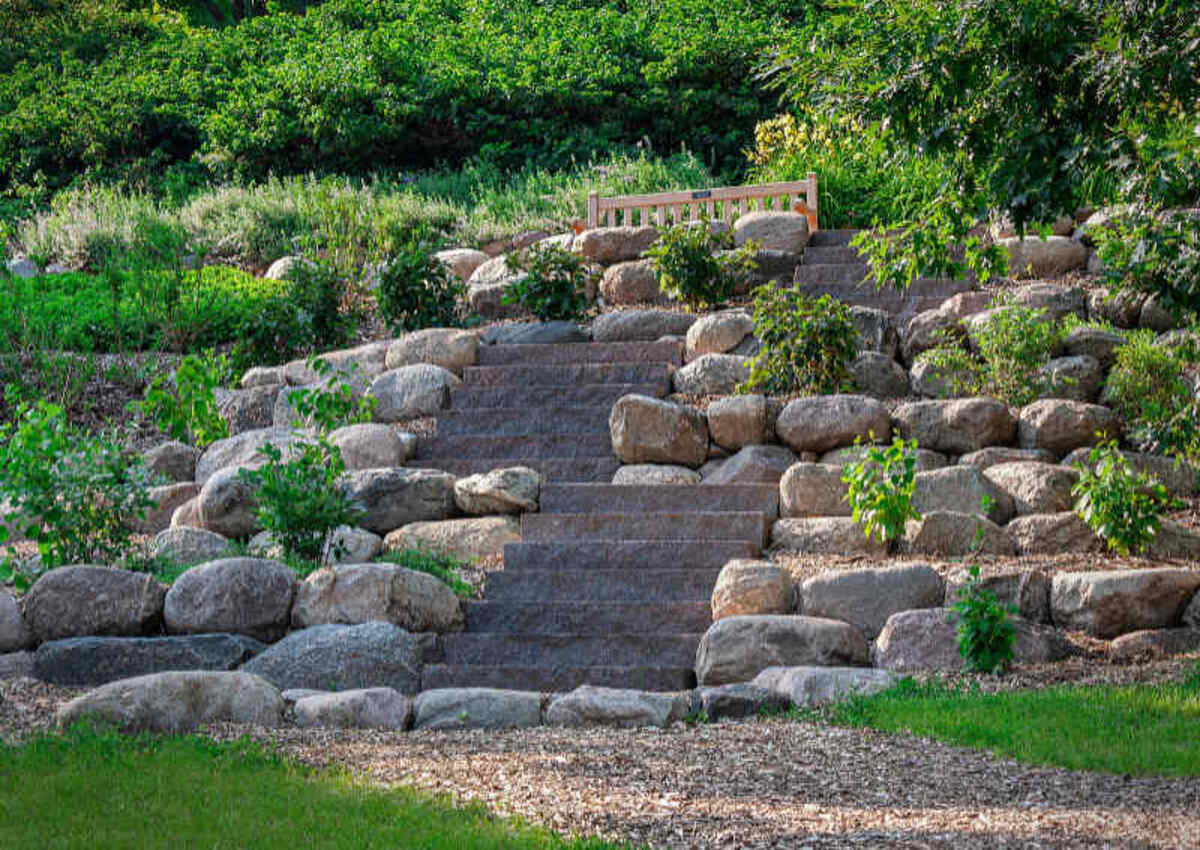

Landscape Design
How To Use Landscaping Rocks
Modified: January 22, 2024
Unlock the secrets of landscape design with our step-by-step guide on how to use landscaping rocks. Create stunning outdoor spaces with the help of this essential landscaping material.
(Many of the links in this article redirect to a specific reviewed product. Your purchase of these products through affiliate links helps to generate commission for Chicagolandgardening.com, at no extra cost. Learn more)
Table of Contents
Introduction
Welcome to the vibrant world of landscaping rocks! If you’re looking to add a touch of elegance and functionality to your outdoor space, landscaping rocks are the perfect solution. These natural beauties have the power to transform any dull yard into a stunning oasis, enhancing your property’s curb appeal and creating a space that you can truly enjoy.
Landscaping rocks come in various shapes, sizes, and colors, making them a versatile choice for any design style. Whether you want to create a serene garden, build a captivating pathway, or construct a breathtaking water feature, landscaping rocks can cater to your specific needs.
Not only do landscaping rocks enhance the visual appeal of your landscape, but they also offer a range of practical benefits. These rocks act as a natural barrier against erosion, reducing the risk of soil being washed away during heavy rains. They also help to control weed growth, minimize soil compaction, and provide insulation for plants. Furthermore, their durability ensures that they withstand the elements and maintain their beauty for years to come.
Before diving into the world of landscaping rocks, it’s important to understand the various types available. From smooth river rocks to rugged flagstone, each type brings its own unique charm to your landscape. This article will guide you through the different types of landscaping rocks, how to select the right ones for your project, and the steps involved in installing and maintaining them.
So, if you’re ready to take your landscape design to the next level and create a stunning outdoor haven, let’s jump right in and explore the wonderful world of landscaping rocks!
Benefits of Landscaping Rocks
Landscaping rocks offer a multitude of benefits, making them a popular choice for homeowners and landscape designers alike. Let’s explore some of the key advantages of incorporating landscaping rocks into your outdoor space:
- Enhanced Visual Appeal: Landscaping rocks add a natural and organic touch to your landscape, creating a visually stunning and picturesque environment. Whether used as a focal point or as a complement to other elements, these rocks bring texture, depth, and character to your outdoor space.
- Durability: One of the standout features of landscaping rocks is their durability. Unlike mulch or other organic materials, rocks do not break down over time, ensuring that your landscape looks pristine for years to come. They are not prone to fading, rotting, or decomposing, making them a long-lasting and low-maintenance option.
- Weed Control: The use of landscaping rocks can significantly reduce weed growth in your garden beds. These rocks act as a barrier, preventing sunlight from reaching weed seeds and hindering their growth. By minimizing weed competition, you can spend less time on maintenance and more time enjoying your beautiful landscape.
- Erosion Control: Sloped or uneven terrain can be vulnerable to erosion. Landscaping rocks provide stability to the soil, preventing erosion and minimizing the risk of soil runoff during heavy rains. They act as a natural barrier, helping to retain moisture and reduce the impact of water flow on the landscape.
- Low-Maintenance: Once installed, landscaping rocks require minimal maintenance. Unlike grass that needs regular mowing and watering, rocks only need occasional cleaning and debris removal. This saves you time, energy, and money in the long run, allowing you to focus on enjoying your outdoor space instead of constant upkeep.
Whether you’re seeking to enhance the beauty of your landscape, control weeds, or prevent erosion, landscaping rocks offer a wide range of benefits. Their durability, low maintenance requirements, and ability to transform your outdoor space make them an excellent choice for any landscaping project.
Types of Landscaping Rocks
When it comes to choosing landscaping rocks for your outdoor project, you have a wide array of options to suit your design preferences and needs. Here are some of the most common types of landscaping rocks:
- River Rock: River rocks, also known as pebbles or creek stones, are smooth and round in shape. They are often found near rivers or streams and come in various sizes and colors. River rocks are popular for their natural aesthetic appeal and are commonly used for pathways, water features, and as a decorative element in garden beds.
- Flagstone: Flagstone is a flat and thin type of rock that is commonly used for creating walkways or patios in landscaping projects. It can be irregularly shaped or cut into specific sizes, and it often has a rustic and natural look. Flagstone is known for its durability and its ability to blend seamlessly with the surrounding landscape.
- Limestone: Limestone rocks are popular for their unique appearance and versatility. They can range from light to dark shades of gray and can be used for various purposes, such as retaining walls, garden borders, or as a backdrop for plants. Limestone is a durable rock that adds a timeless and elegant touch to any landscape design.
- Granite: Granite is a type of igneous rock that offers exceptional durability and aesthetic appeal. It often comes in shades of gray, black, or pink and can be used for a variety of landscaping applications, including pathways, edging, and decorative accents. Granite rocks are known for their resistance to harsh weather conditions and their ability to retain their color over time.
- Slate: Slate rocks are characterized by their layered texture and stunning color variations, ranging from dark gray to deep reds and greens. They are versatile and can be used for both functional and decorative purposes, such as creating pathways, accentuating garden features, or constructing retaining walls. Slate rocks add a touch of elegance and sophistication to any landscape.
These are just a few examples of the wide range of landscaping rocks available. Each type offers distinct characteristics that can complement different design styles and preferences. Consider the color, texture, and durability of the rocks when making your selection, ensuring they align with your overall landscape design vision.
Selecting the Right Landscaping Rocks
Choosing the right type of landscaping rocks is crucial to achieving the desired look and functionality for your outdoor space. Here are some factors to consider when selecting landscaping rocks:
- Aesthetic Appeal: Determine the visual style you want to achieve in your landscape, whether it’s a natural, rustic, or modern look. Consider the color and texture of the rocks and how they will complement the existing elements in your outdoor space.
- Size and Quantity: Assess the scale of your landscape project and the available space. Larger rocks may be suitable for creating focal points or retaining walls, while smaller rocks are ideal for pathways and ground cover. Consider the quantity needed to cover the desired area adequately.
- Functionality: Think about the specific purpose of the rocks in your landscape. Are they meant to create a decorative feature, provide erosion control, or act as a pathway? Different types of rocks have different properties and strengths that make them more suitable for specific uses.
- Durability: Consider the weather conditions in your area and choose rocks that can withstand the elements. Some rocks, such as granite and limestone, are highly durable and resistant to fading, while others may be more susceptible to wear and tear.
- Budget: Set a budget for your landscaping project and choose rocks that align with your financial constraints. Price can vary depending on the type, size, and availability of the rocks. Remember to also factor in any additional costs for delivery and installation.
It’s also a good idea to visit a local stone yard or landscaping supplier to view the rocks in person. This allows you to assess the color, texture, and quality of the rocks firsthand and make a more informed decision. Additionally, consult with a professional landscaper or designer who can provide expert advice and help you select the right type and quantity of rocks for your specific project.
By carefully considering these factors and taking the time to select the right landscaping rocks, you can ensure that your outdoor space is transformed into a beautiful and functional oasis that brings joy and enhances your overall landscape design.
Preparing the Area for Landscaping Rocks
Proper preparation of the area where you will be installing landscaping rocks is essential to ensure a successful and long-lasting outcome. Here are the steps to follow when preparing the area:
- Clear the Area: Remove any existing vegetation, plants, debris, or obstacles from the area where the rocks will be installed. This includes weeds, grass, rocks, or old mulch. Clearing the area will provide a clean and blank canvas for your landscaping project.
- Level the Ground: Use a rake or a shovel to level the ground where the rocks will be placed. This helps to create a smooth and even surface, ensuring that the rocks are securely laid and eliminating any potential tripping hazards.
- Install a Weed Barrier: To prevent weed growth and keep the rocks in place, it’s important to install a weed barrier. Lay down a landscape fabric or a geotextile material over the prepared area. This will help block sunlight from reaching weed seeds and prevent them from sprouting through the rocks.
- Edging and Borders: Consider installing edging or borders along the perimeter of the area to contain the landscaping rocks. This helps to define the space and keep the rocks from spreading beyond the desired area. Edging materials can include plastic or metal strips, brick pavers, or natural stone.
- Amend the Soil (optional): If needed, amend the soil before laying the rocks. Add organic matter or compost to improve soil fertility and drainage. This step is particularly important if you are planning to incorporate plants or flowers among the rocks.
- Ensure Proper Drainage: Check the area’s drainage to prevent water pooling or damage to the rocks. If necessary, create a slight slope or incorporate drainage channels to direct water away from the rock bed.
Once the area is fully prepared, you are ready to move on to the next stage of your landscaping project: installing the rocks. By following these preparatory steps, you will create a solid foundation for the rocks and ensure a successful and visually appealing end result.
Installing Landscaping Rocks
Now that you have prepared the area, it’s time to start installing the landscaping rocks. Follow these steps to ensure a smooth installation process:
- Start with a Base Layer: Begin by spreading a layer of larger rocks or crushed stone as a base. This will provide stability and help with drainage. Level the base layer using a rake, making sure it is even and well-distributed.
- Arrange the Rocks: Place the larger rocks or desired focal points in the designated areas first. Arrange them in a visually pleasing way, considering size, shape, and color. This will serve as the main framework for your landscape design.
- Add Smaller Rocks: Fill in the gaps between the larger rocks with smaller ones. This will help create a cohesive and balanced look. Consider using different sizes and shapes to add variety and texture to the design.
- Create Pathways: If you are installing landscaping rocks for pathways, place the rocks closely together to form a stable and comfortable surface for walking. Ensure that the pathway is wide enough to accommodate foot traffic.
- Secure and Compact: Once the rocks are in place, use a tamper or a plate compactor to firmly press them into the ground. This helps to stabilize the rocks and prevents shifting or movement over time.
- Finishing Touches: Take a step back and assess the overall look of your landscaping rocks installation. Make any necessary adjustments or additions to achieve your desired aesthetic. Consider adding decorative accents such as ornamental plants, lighting, or seating areas to enhance the overall appeal.
Throughout the installation process, be mindful of safety. Wear appropriate protective gear, such as gloves and safety goggles, when handling rocks. Take your time and ensure that the rocks are securely and evenly placed for a polished end result.
Remember, creativity is key when installing landscaping rocks. Experiment with different arrangements and combinations to achieve a design that reflects your style and vision. Enjoy the process and let your outdoor space come to life with the natural beauty and charm of landscaping rocks.
Creative Ideas for Using Landscaping Rocks
Landscaping rocks offer endless possibilities when it comes to creating stunning and captivating outdoor designs. Here are some creative ideas for using landscaping rocks to elevate your landscape:
- Rock Gardens: Create a serene and low-maintenance rock garden by arranging a variety of rocks in different shapes, sizes, and colors. Intersperse them with drought-tolerant plants, succulents, and ornamental grasses to add texture and visual interest.
- Rock Walls and Retaining Walls: Construct beautiful rock walls or retaining walls using large, sturdy rocks. These walls not only provide structural support but also add a natural and rustic element to your landscape. Consider incorporating cascading plants or a waterfall feature for added charm.
- Rock Pathways: Design unique and visually appealing pathways using landscaping rocks. Combine different shapes and sizes of rocks to create a mosaic effect or use larger rocks as stepping stones for a more natural look. Enhance the pathway with subtle lighting for a magical ambiance in the evenings.
- Water Features: Transform your outdoor space into a soothing oasis by incorporating water features using landscaping rocks. Create a tranquil pond, a cascading waterfall, or a bubbling rock fountain. The rocks not only enhance the aesthetics but also provide texture and natural filtration for the water.
- Rock Mulch: Replace traditional organic mulch with rocks to add a modern and sleek look to your garden beds. Choose rocks in complementary colors that contrast with your plants to create a visually striking display. This also helps with weed control and reduces the need for frequent mulch replacement.
- Rock Sculptures and Artwork: Let your creativity shine by using landscaping rocks to build sculptures or artwork in your outdoor space. Design unique focal points, such as rock cairns or stacked rock sculptures, to add an artistic touch to your landscape.
These are just a few creative ideas to inspire your landscaping rock projects. Feel free to explore your own unique ideas and incorporate rocks in ways that reflect your personal style and imagination.
Remember to consider the overall theme and aesthetics of your landscape when choosing how to incorporate rocks. By carefully integrating rocks into your design, you can create a visually captivating and harmonious outdoor space that brings joy and serenity to your everyday life.
Maintaining Landscaping Rocks
Maintaining your landscaping rocks is key to preserving their beauty and ensuring their longevity in your outdoor space. While rocks require minimal upkeep compared to other landscaping materials, here are some essential maintenance tips to keep in mind:
- Cleaning: Periodically remove debris, leaves, and dirt from the surface of the rocks. This can be done using a leaf blower, a soft brush, or by simply rinsing them with water. Regular cleaning helps maintain the vibrant colors and prevents the accumulation of debris.
- Weed Control: Although rocks act as a natural barrier against weeds, occasional weed growth may still occur. Regularly inspect the area and remove any weeds by hand or by using a weed puller. This helps ensure that the rocks remain weed-free and maintain a pristine appearance.
- Repair and Realign: Over time, rocks may shift or become dislodged due to natural elements or foot traffic. Regularly inspect the installation and make necessary adjustments, such as repositioning or replacing rocks, to maintain a cohesive and visually pleasing look.
- Inspect for Damage: Routinely inspect the rocks for any signs of damage or deterioration. Look for cracks, chips, or fading colors. Address any damage promptly by replacing the affected rocks to maintain the overall integrity and aesthetic appeal of your landscape.
- Monitor Drainage: Ensure that the rocks are not obstructing proper drainage. Check for any signs of water pooling or excessive runoff, which can indicate a need for adjustment or additional drainage solutions. Proper drainage is crucial to prevent water damage and maintain the stability of the rocks.
- Prune and Trim: If you have plants or shrubs growing alongside the rocks, regularly trim and prune them to prevent overgrowth. Overgrown plants can overshadow the rocks, affecting their visibility and detracting from the overall aesthetic. Keep the surrounding vegetation well-maintained and trimmed to showcase the rocks.
By following these maintenance practices, you can ensure that your landscaping rocks remain in optimal condition and continue to enhance the beauty of your outdoor space. While the upkeep is minimal, regular inspections and proactive care will prolong the lifespan and appearance of your rock features.
Keep in mind that different types of rocks may have specific maintenance requirements. Consult with a landscaping professional or refer to specific care instructions provided by your supplier to ensure that you are properly maintaining your specific type of landscaping rocks.
Conclusion
Landscaping rocks offer a world of possibilities when it comes to transforming your outdoor space into a stunning and functional landscape. From enhancing visual appeal to providing practical benefits such as weed control and erosion prevention, landscaping rocks are a versatile choice for any landscape design.
By selecting the right type of rocks for your project, properly preparing the area, and installing the rocks with care, you can create a beautiful and captivating landscape that reflects your style and vision. Whether you choose to incorporate rocks in a rock garden, pathway, water feature, or other creative ideas, the natural beauty and durability of landscaping rocks will add a timeless charm to your outdoor space.
It is important to remember that maintaining your landscaping rocks is crucial for preserving their aesthetics and longevity. Regular cleaning, weed control, and inspection for damage are essential maintenance tasks that will ensure your rocks continue to enhance your landscape for years to come.
So, let your creativity blossom and explore the endless possibilities of landscaping rocks. Whether you’re a seasoned gardener or a novice enthusiast, landscaping rocks will transform your outdoor space into a tranquil oasis that you can proudly enjoy and share with others.
